| Sofia |


 |
|
A thick stack of soggy clouds hides Sofia until moments before we land. A brief glimpse of red-tiled rooves and low, dry mountains...and we are on the ground. Three young Anarchists-Matika, Daro and Vlad-meet us at the airport and take us on a wild ride across Sofia, punctuated by frequent and animated disagreements about the shortest route to our destination! While we succumb to sudden-death Cyrillic immersion and gawk at the cows and sheep grazing amid piles of rubble and household trash in the medians, our friends explain that Bulgaria has fared even worse under democratic rule than other Eastern Block nations. Average household income is just 305 levs (about $150 US) per month. High unemployment in rural areas has swelled the populations of dreary Soviet-style housing projects on the outskirts of Sofia and Plovdiv. |
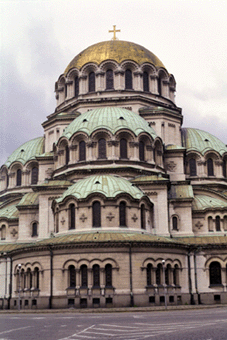 |
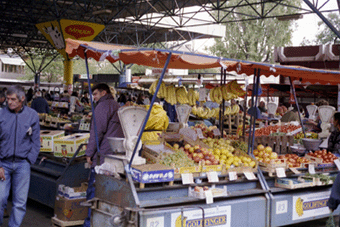
While Sofia has its share of public monuments, tourists must run a gauntlet of stray dogs, pickpockets and common thugs to visit them. The highlights of our visit are
|
| Rila Monastery The morning we leave Sofia, the sun comes out, the Sofiski are smiling, and, miraculously, we survive our first ego-bruising attempts to order coffee and pastries in Bulgarian. We head south out of Ovcha Kupel Station, where kerchiefed women bend over short-handled brooms, while the cobblestone streets clatter with pumpkin-colored trams, horse-drawn carts and rickety busses belching clouds of black smoke. We climb steeply into the foothills of the Rila Mountains, through villages of stucco and red tile concealed under a tangle of grape arbors. At this time of year, every vehicle is a delivery vehicle. The backroads are clogged with horse- and donkey-drawn carts hauling loads of corn, beans and bright red peppers. Busses stop to deliver yoghurt, lumber and potatoes, and sometimes the drivers are barely visible behind the piles of vegetables and fruit. We miss the second bus because my victim shakes his head when I ask if this is the bus to Rila Monastery. From then on, we extract a verbal response: "Da?" we inquire, nodding our heads, and "Da!" they reply, shaking theirs! |
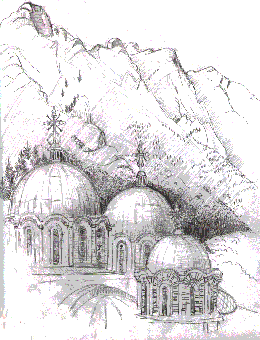 |
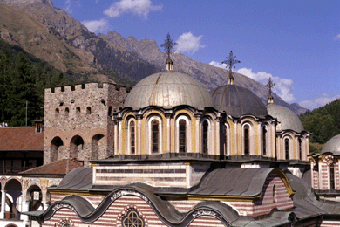
Limping into Rila, late and hungry, we quickly forget our fatigue. Set in a spectacular basin that reminds me of Colorado's San Juan Mountains, this world heritage site was burnt to the ground in 1833 and rebuilt in the mid-19th century as a monument to Bulgarian culture. Rila Monastery is one enormous folk art canvas, its exterior painted with bold geometric patterns in black, white and rust, while frescoes of vibrant color and stunning detail cover the inner walls and veranda of the monastery church. |
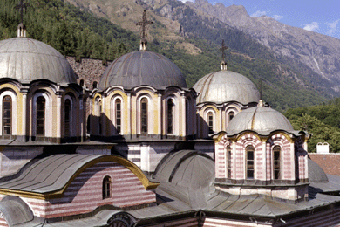 |
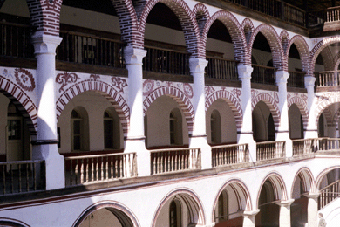 |


 |